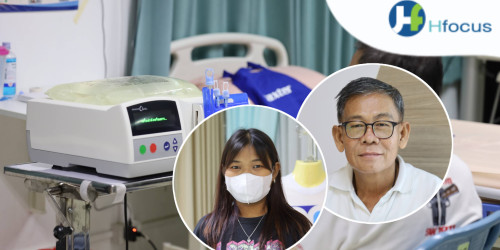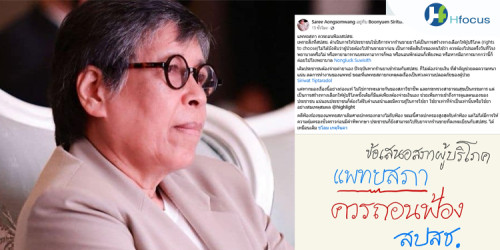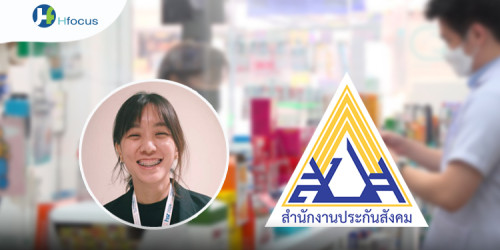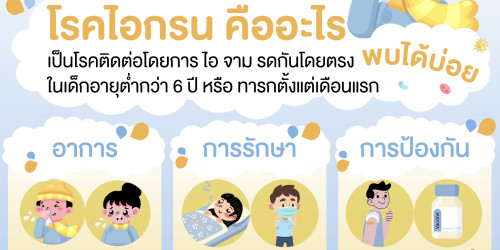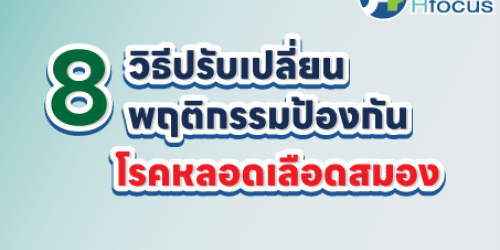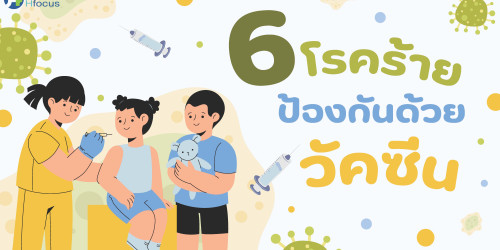Thailand's combination of low costs and good quality lifts it above the regional competition as it pushes to become Asean's medical hub.
The formation of the Asean Community (AC) in 2015 will liberalise medical jobs for nationals of member countries, and all signs are that Thailand is ready for the change. The Ministry of Public Health plans to spend about 3.13 billion baht between now and 2016 to fortify Thailand's position as an international medical hub.
With this development, the ministry expects Thailand to raise medical service incomes by 5% yearly, and to bring about 814 billion baht into the country during the four-year period.
Of this, 672 billion baht is expected to come from medical treatments, 85.6 billion baht from health promotion services, 3.86 billion baht from Thai traditional medicine, and 52.4 billion baht from herbal and health promotion products.
Last year, 2.53 million foreigners visited Thailand for medical and health services, up from 1.74 million in 2011.
Thailand is well recognised for its world-class but low-cost medical services. Fees here are 30-40% cheaper than those in Singapore, while in the United States medical services can cost as much as five times more than in Thailand.
The National Health Commission Office envisages Thailand becoming the medical tourism leader in Southeast Asia, in competition with Malaysia and Singapore, as a large number of well-to-do people from Laos, Cambodia, Myanmar and Vietnam are seeking treatment here. The office predicts that when the AC is formed, the number of medical tourists from neighbouring countries will rise by 4-5%.
"Asean liberalisation is good but I think Thailand's medical circle has already advanced beyond this scope," Supachai Kunaratnpruk, executive dean of the Medical College and Health Science Departments at Rangsit University, said. "We have been internationally recognised for a long time."
Dr Supachai is concerned the AC may lead to a medical brain drain, but he thinks the problem will be limited, as capable Thai doctors are already able to work overseas, and the rates of pay here are attractive enough for most doctors.
"Experienced doctors should remain in the country, because the medical business and the number of private hospitals will grow," he said.
"Besides, the government intends to promote Thailand as a regional medical hub. There will certainly be a high demand for experienced doctors."
However, he does foresee a brain drain among nurses because they have heavy workloads for lesser pay.
When the AC launches in 2015, the professions of doctors, nurses and dentists will be liberalised. High competition is expected from member countries, especially in Singapore where medical standards and rates of pay are high.
The Ministry of Public Health has emphasised that enough health personnel must remain in Thailand to prevent any negative effects on services here.
Thailand can produce 2,500 new doctors yearly. At present, it needs another 10,719 for public hospitals and will need about 1,200 to cater for patients visiting from other Asean countries once the AC launches.
The production capacity for nurses stands at 10,000 annually. The government sector needs 16,030 more nurses, and 5,454 will be needed for AC visitors.
For dentists, there are 800 graduates yearly. The government sector needs 2,900 more for its health facilities and 345 more for Asean services.
Assoc Prof Preecha Wanichsetakul, dean of the Faculty of Medicine at Thammasat University, says the AC represents a great chance for the Thai medical industr y to develop.
"Thai doctors are capable of reading and writing English, but some may have problems speaking it, especially those in rural areas," he said.
"The formation of the AC will bring more patients who speak several languages to seek health services in Thailand.
"Therefore, I think English is a priority for Thai medical students. Thammasat University is pushing for an Englishlanguage medical programme."
On Dec 18 last year, the cabinet resolved to boost the number of new doctors between now and 2017.
Its original target was for 4,780 new doctors per year, but this goal was upped to 9,039.
At present, the doctor production capacity at 21 universities stands at 2,500 doctors annually.
This year, Mae Fah Luang University in Chiang Rai, Bangkok's Thammasat University and the privately owned Siam University will launch new medical programmes.
Dr Supachai supports the plan to immediately increase the production of doctors in response to the upcoming formation of the AC and the existing local doctor shortage.
He also suggested the government and the private sector join forces in this effort.
The privat e sector ha s so far not participated in the production of doctors, although private hospitals are ready to do so in terms of venues, instruments and advanced technologies, Dr Supachai said.
He believe s private hospitals could be very good places to train doctors.
" Clear policies from professional organisations and policy-related support from the government are necessary," he said.
"It is important to change the perception that private operators are only proftoriented. The private sector actually has high potential and wants to help the nation."
Dr Supachai also urged the government to support research on medicine, medical technologies and the clinical use of drugs so that it will be able to mostly rely on its own medicines. Otherwise, Thailand will have to depend on imported medications from Singapore and elsewhere, he said.
Medical Council of Thailand chair man Somsak Lohlekha is positive about the availability of doctors in the country.
He has told many forums that the Thai population increases by an average of 1% each year, while the number of medical graduates rises by 8% annually. With these growth rates, there will be enough doctors to serve patients in Thailand within a decade, he said.
Dr Somsak is also concerned about the supply of nurses. He predicts that when the AC is established, private hospitals will recruit nurses from other Southeast Asian nations. Nurses are already brought in from the Philippines, he said.
To prepare for the AC, the Medical Council of Thai land is changing its regulations to issue temporary medical practice licences to foreign doctors, to allow the private sector to employ foreign personnel to improve medical education, to permit the import of foreign nurses to take care of migrant patients, and to develop Thailand into a centre of medical education for students from neighbouring countries.
The Labour Ministry's Bureau of Coordination for International Cooperation should draw up a projection of doctor and nurse availability when the AC forms.
The bureau reports that the ratio of Thai doctors to foreign physician assistants at private hospitals is 100:40. Foreign medical graduates are hired especially at large private hospitals to communicate with foreign clients.
The ratio of Thai nurses to foreign n urses at private hospitals is 100:24. Malaysian, Myanmar and Lao nurses are often hired to work as nursing assistants. About 200 Philippine nurses are employed as administrative affairs nurses in private hospitals.
The information, along with the government's drive to produce more doctors and promote the country as a medical hub shows the Thai private sector is ready for the AC.
The liberalisation of medical businesses should be a good chance for the further development of Thai medicine thanks to the influx of medical staff and technologies into Thailand as it opens the door to the AC in 2015.
Source: Bangkok Post June 24, 2013
- 11 views

